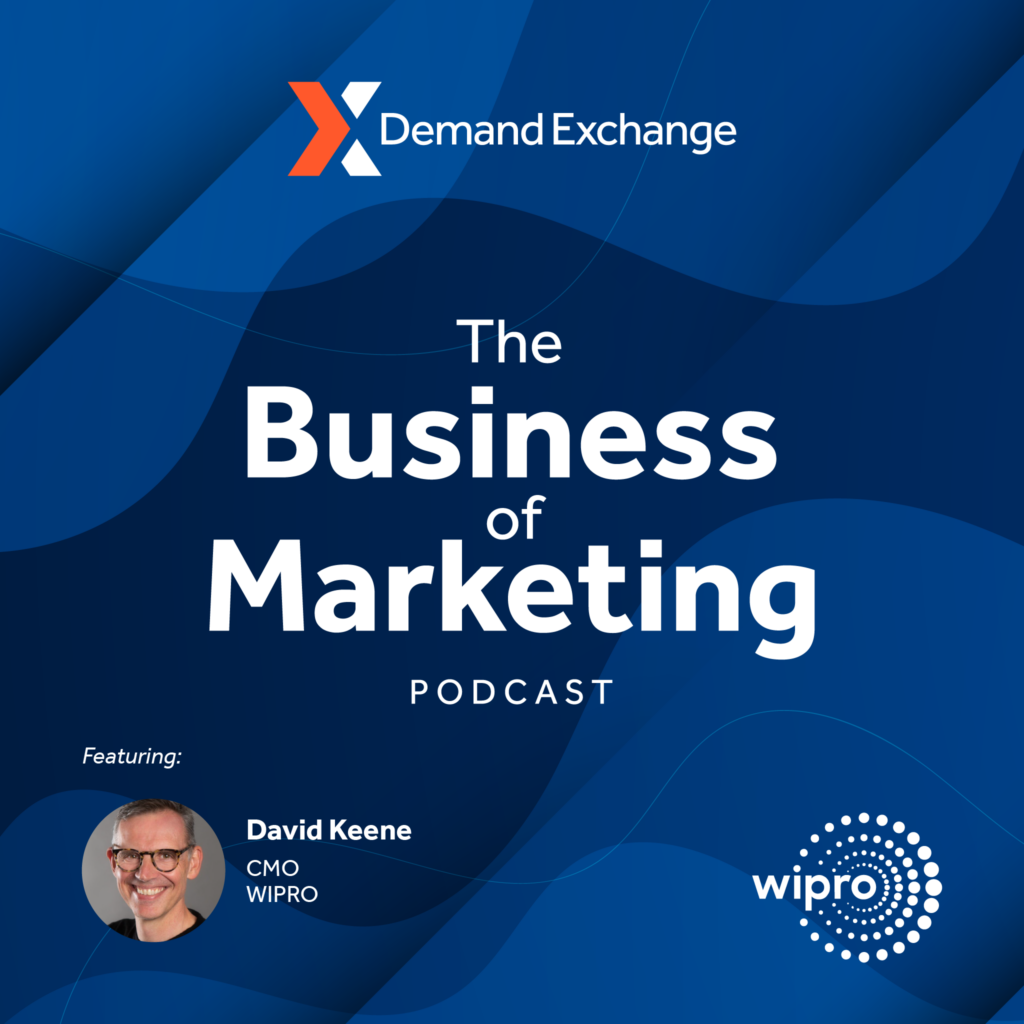ABM Account Based Marketing

B2B Buying Committee Techniques to Influence Key Stakeholders
In B2B transactions, decisions are rarely made by just one person.
Instead, they often involve a buying committee—a group of key stakeholders who come together to decide which products or services are best for their organization.
This article explores the roles within a B2B buying committee, the stages of the buying process, and the most effective ways to engage with this group.
Understanding how a buying committee operates is vital for anyone involved in B2B buying.
Whether you’re on a sales team or working in marketing, knowing who the key decision-makers are, what influences their choices, and how they collaborate can significantly improve your strategies and increase your chances of success.
The decisions made by this group can influence your business relationships, affect your revenue, and steer the direction of your company.
This guide will walk you through the essential aspects of the buying committee and provide you with practical insights to align your efforts with the decision-makers.
We’ll explore the following key topics:
- Stages of the B2B Buying Group Journey
- Who is Involved in the B2B Buying Process?
- How to Craft a Buyer Journey Map
- Best Practices for B2B Sales Engagement
Ready to understand the workings of B2B buying committees and enhance your approach?
Let’s get started.
Stages of the B2B Buying Group Journey
In a B2B buying group, the journey from recognising a need to making a purchase is structured and deliberate.
Understanding each stage of this buying journey is key to aligning your approach with the decision-makers involved.
Here’s a breakdown of the four main stages in the buying process.

Stage 1: Awareness
Every buying journey begins with awareness. At this stage, the B2B buying group identifies a problem or an opportunity that requires attention.
This could be anything from a gap in current operations to a new business goal that needs support.
During this phase, it’s crucial to focus on identifying needs and understanding the specific buyer needs of the organization.
The group will start to collect initial information to understand potential solutions, marking the start of the research phase. This is an early stage where the goal is to gather as much relevant data as possible to inform the next steps.
Stage 2: Consideration
With a clear understanding of the needs, the B2B buying group moves into the consideration stage.
Here, they evaluate various products or services that could address their requirements.
The group carefully assesses potential solutions to determine which options best align with their business goals.
This stage involves a detailed evaluation where different solutions are compared. The group spends time evaluating options, weighing the pros and cons of each against their specific needs.
This comparison is a critical part of the decision-making process and helps narrow down the possibilities to those most likely to succeed.
Stage 3: Decision
As the buying journey progresses, the focus shifts to making a decision.
The B2B buying group narrows down the list of potential vendors, creating a shortlist of the most viable options.
This shortlisting is based on thorough research and consideration of how well each vendor meets the identified needs.
Once the list is finalized, the buying committee makes its final selection.
This is the moment when the group chooses the best vendor and makes a purchase decision. The entire decision-making process culminates in this stage, with the selected vendor ready to move forward.
Stage 4: Post-Purchase
After the decision is made and the purchase is completed, the journey isn’t over.
The post-purchase phase begins, where the chosen solution is integrated into the organization. This implementation process is crucial for ensuring the solution delivers the expected results.
During this stage, the buying group will also conduct a post-purchase review to assess the effectiveness of the purchase.
They will evaluate the supplier’s performance to ensure that the solution not only meets expectations but also provides value over time. This final step helps close the loop on the buying process and informs future decisions.
Who is Involved in the B2B Buying Process?
Each buying committee member plays a specific role in the decision-making process, ensuring that the final choice meets the organization’s needs.
Typical Roles within a Buying Committee
- Users: These are the end-users who will directly interact with the product or service. Their feedback is crucial as they focus on product utilization and practical benefits.
- Influencers: Influencers shape the decision-making process by providing recommendations and insights. Their influence can significantly sway the committee’s direction.
- Buyers: The buyers manage the procurement process. They handle purchasing logistics and ensure the deal aligns with the organization’s budget and needs.
- Deciders: These individuals hold the authority to make the final decision. Their approval is essential to move forward with the purchase decision.
- Gatekeepers: Gatekeepers control the flow of information and access to the decision-makers. They manage access control and ensure that only relevant details reach the right people.
This structure ensures that every angle is considered, making the buying process thorough and efficient.

How to Craft a Buyer Journey Map
Creating a buyer journey map is essential for understanding how to effectively engage with the various stakeholders involved in a B2B purchase.
As David Keene, CMO of WIPRO, highlights in the Business of Marketing podcast:
“We need to think about B2B in a different way in terms of how we get to a particular buyer. And how we get to a group of buyers… Where does the money sit? How does the decision get made? And what’s the influence structure there? So this idea of an influence map inside a large organization is really critical to the way we think about marketing and what we do.”
This shift in focus requires careful mapping of influence structures and personalized approaches to each stakeholder.
Listen to this podcast episode:

Understanding Stakeholder Needs
To craft a successful buyer journey map, it’s crucial to identify the specific needs of each stakeholder within the buying committee.
As John Karl, Head of Client Development and Growth at Catalyst, emphasizes during his episode, “In B2B marketing, it’s crucial to understand your target audience, including influencers and decision-makers, and tailor your messaging to reach both effectively.”
Listen to this podcast episode:
This means conducting a thorough stakeholder analysis to uncover individual requirements and ensure your content speaks directly to their concerns.
Tailoring your content to resonate with each stakeholder archetype is key.
Mary Cirincione, VP of the Propeller Group, advises, “Always be thinking with every piece of content you’re putting out there: Who are you talking to? What would you want them to do? What would you want them to think about?”
Listen to this podcast episode:
By developing personalized content that engages each group, you increase the likelihood of influencing their role in the decision-making process.
Developing Personalized Strategies
Once you understand the needs of your stakeholders, it’s time to develop strategies that address them directly.
Segmented email campaigns are an effective way to deliver targeted messages to different groups within the buying committee.
Tailoring your email marketing efforts ensures that each stakeholder receives content relevant to their role and concerns.
Similarly, personalized landing pages can greatly enhance user experience by catering to the specific interests of your audience.
These pages should be designed to speak to the unique needs of each stakeholder, ensuring that your targeted content hits the mark.
Layering Content Syndication
To maintain your brand’s visibility across the entire buying journey, content syndication plays a vital role.
This approach helps keep your brand top-of-mind with all stakeholders, ensuring continuous engagement throughout the decision-making process.
Effective content syndication requires a strategic approach. Focus on syndication techniques that maximize your content’s reach and ensure it resonates with your audience.
By doing so, you reinforce your messaging and keep stakeholders engaged, increasing the chances of a successful outcome.
By following these steps, you can craft a buyer journey map that effectively guides your marketing efforts, aligns with stakeholder needs, and enhances your overall engagement strategy.
Best Practices for B2B Sales Engagement
Successful B2B sales engagement requires more than just generic outreach; it demands a strategic, personalized approach that resonates with each stakeholder in the buying committee.
As James Slezak, CEO @ Swayable, notes, “Marketing is about increasing demand, not just starting with people who already have it. We’ve seen cases where the segment with the highest baseline demand wasn’t the one that had the highest lift.”
Listen to this podcast episode:
Understanding this principle is key to crafting strategies that truly engage and convert.
Personalized Approaches
To effectively engage stakeholders, it’s essential to tailor your approach to meet their unique needs.
A personalized approach involves understanding each stakeholder’s specific challenges and goals and then crafting strategies that address these directly.
This approach not only meets stakeholder needs but also builds stronger relationships.
Shafqat Islam, CMO of Optimizely, highlights the importance of content in this process:
“Content generates demand because people read the content, share it, and often will go on the entire journey. They may read 5 pieces of content of thought leadership deeper and deeper into the funnel and eventually fill out a form.”
Listen to this podcast episode:
By showing genuine interest and dedication to solving stakeholder-specific problems, you can foster stakeholder commitment, enhance engagement, and build trust.
This trust is crucial as it encourages stakeholders to engage more deeply with your content, moving them further along the decision-making process.

One-Size-Fits-All Strategies are Outdated
The buying committee is diverse, with each member having different priorities and concerns. Tailored strategies are therefore essential.
Customising your approach to fit the individual needs of each stakeholder ensures that your messaging is relevant and impactful.
Consider incorporating case studies or examples of successful engagements where personalised strategies made a difference.
These real-world examples not only demonstrate the effectiveness of your approach but also provide proof that your tailored strategies can lead to successful outcomes.
Using ABM (Account-Based Marketing)
Account-Based Marketing (ABM) is a powerful tool that can significantly enhance your sales strategies.
By focusing your efforts on specific accounts, ABM allows you to deliver targeted marketing that aligns perfectly with the needs of each stakeholder group within those accounts.
Integrating ABM into your sales process involves a few key steps.
First, identify the most valuable accounts that align with your business goals. Then, develop marketing strategies that are specifically designed to engage those accounts.
Effective ABM implementation requires collaboration between sales and marketing teams to ensure that every touchpoint is aligned with the overall strategy.
By adopting these best practices, you can improve your B2B sales engagement, ensuring that your efforts are not only targeted and personalised but also effective in driving results.
Conclusion
Throughout this article, we’ve explored the key aspects of the buying process and highlighted the importance of tailoring your approach to each member of the buying committee.
Engaging stakeholders with personalised strategies, as emphasised by industry leaders, is no longer optional—it’s essential.
Recap of the Importance of Understanding and Engaging the Buying Committee
- Key Roles: Recognise the diverse roles within the buying committee, including users, influencers, buyers, deciders, and gatekeepers.
- Stakeholder Engagement: Tailor your content and approach to meet the specific needs of each stakeholder, ensuring that your efforts resonate and build strong relationships.
- Effective Strategies: Move away from one-size-fits-all approaches, embracing personalised strategies that align with the unique dynamics of the B2B buying process.
As James Slezak pointed out, the goal is to increase demand by reaching the right audience, not just those already engaged.
This requires a deeper understanding of the buying committee and a commitment to personalised engagement.
Final Thoughts on Crafting Effective B2B Sales Strategies
To craft successful B2B sales strategies, consider the following actionable insights:
- Build Trust: Focus on genuine stakeholder engagement by addressing specific challenges and providing tailored solutions. As Shafqat Islam noted, content that resonates with the audience not only generates demand but also builds trust over time.
- Collaborative Approach: Ensure that your sales and marketing teams work together seamlessly, particularly when implementing strategies like ABM. This collaborative effort ensures that every touchpoint is aligned and effective.
- Actionable Insights: Regularly review and refine your strategies based on stakeholder feedback and the outcomes of your campaigns. Staying agile allows you to adapt to the changing needs of the buying committee.
In conclusion, the key to success in B2B sales lies in understanding the members of the buying committee and engaging them with strategies that are thoughtful, personalised, and effective.
FAQs (Frequently Asked Questions)
Who participates in the business buying process?
The business buying process typically involves a buying committee, which is a group of individuals within an organization responsible for making purchasing decisions. This committee often includes:
- Users: Those who will directly use the product or service.
- Influencers: Individuals who shape the decision-making process by providing recommendations and insights.
- Buyers: The people in charge of procurement and handling the purchase.
- Deciders: The final decision-makers who have the authority to approve the purchase.
- Gatekeepers: Individuals who control access to decision-makers and manage the flow of information.
What are the stages of the B2B buying journey?
The B2B buying journey typically consists of four main stages:
- Awareness: The buying committee recognizes a need or opportunity and begins gathering initial information.
- Consideration: The group evaluates potential solutions, comparing different products or services to meet their needs.
- Decision: The committee narrows down the options, shortlists vendors, and makes a final purchase decision.
- Post-Purchase: After the purchase, the solution is implemented, and the committee reviews its effectiveness and the supplier’s performance.
How can personalized approaches enhance stakeholder engagement?
Personalized approaches are crucial for enhancing stakeholder engagement because they address the specific needs and concerns of each member of the buying committee. By tailoring your content and communication strategies to individual stakeholders, you can:
- Build trust and credibility.
- Foster deeper connections.
- Increase relevance and resonance with each stakeholder.
- Encourage stakeholders to engage more fully with your brand.
This personalized engagement is more likely to result in a positive decision, as stakeholders feel that their unique needs are understood and addressed.
Why is it important to tailor strategies to individual stakeholders?
Tailoring strategies to individual stakeholders is essential because each member of the buying committee has different priorities, concerns, and levels of influence. A one-size-fits-all approach risks alienating key decision-makers or missing critical needs.
By customising your strategies, you can:
- Ensure that each stakeholder receives relevant and impactful messaging.
- Increase the likelihood of achieving consensus within the committee.
- Address specific pain points and objections more effectively.
Tailored strategies demonstrate a commitment to understanding the unique dynamics of the buying committee, ultimately leading to better outcomes in the B2B buying process.

About the Author
Nick is an experienced Marketing Campaign Manager renowned for steering successful demand and lead generation campaigns for various enterprises. His expertise lies in creating compelling content that strongly resonates with target demographics, effectively promoting lead magnets across diverse channels. Nick's strategic approach to marketing has consistently resulted in enhanced audience engagement and significant lead generation, underscoring his pivotal role in the success of the campaigns he manages.
About the Author

Nick is an experienced Marketing Campaign Manager renowned for steering successful demand and lead generation campaigns for various enterprises. His expertise lies in creating compelling content that strongly resonates with target demographics, effectively promoting lead magnets across diverse channels. Nick's strategic approach to marketing has consistently resulted in enhanced audience engagement and significant lead generation, underscoring his pivotal role in the success of the campaigns he manages.